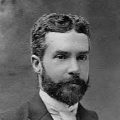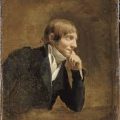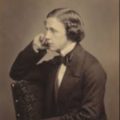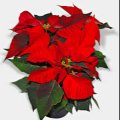John Henry Corner
The Life of Plants
January 12, 1906
Today is the birthday of the brilliant botanist, conservationist, and mycologist, Edred John Henry Corner.
As a young boy, John developed a stutter - something he battled all of his life, and it was the main reason he never pursued teaching or lecturing as a career. Sadly, John attributed his stutter to his parents, who he remembered as harsh and cold.
Early in his career, John was mentored by the British botanist, photographer, and botanical illustrator Arthur Harry Church. A devoted archivist, Arthur advised John,
“Note everything! Draw everything! Photograph everything!”
When John was 23, he seized the opportunity to become a mycologist and Assistant Director at the Singapore Botanical Garden. John began work in Singapore in 1929.
Thirteen years later, during WWII, Singapore surrendered to the Japanese. Fortunately, John’s wife and son, John Jr., nicknamed “Kay,” were evacuated. Although John was conscripted into the Singapore Army, John’s botanical work saved him from serving in the army. John had trained monkeys to collect specimens for him in the jungles when he went out botanizing. However, an unexpected attack by one of his monkeys damaged John’s right arm, and it was this disability that saved John from serving in the Singapore Army.
Now, before the Japanese arrived in the city, looting had started. Anticipating the worst, John persuaded the Governor to allow him to bring a note to the Japanese requesting they spare the Botanical Gardens and the Raffles Museum. John’s courageous foresight helped save both of these scientific treasures.
As fate would have it, the Japanese man in charge of Singapore was an avid amateur botanist determined to maintain the Botanical Garden. For the remaining three years of WWII, John was kept on as a civil prisoner at the Botanical Garden, where he was allowed to work with careful supervision. Unfortunately, this unlikely scenario caused some folks to label John a traitor falsely. Nevertheless, John continued his work.
During his time in Singapore during the Great War, John botanized, worked on his theories regarding plants and evolution, and wrote much about his discoveries and life in Singapore. John also studied palm trees, developed his theory of forest evolution, and began to study the microscopic structure of seeds. John even managed to produce a flora of Singapore. In hindsight, John’s work during this trying time was foundational to his professional development.
John’s famous book The Life of Plants was released two decades later in 1964. As a best-seller, The Life of Plants featured John’s brilliant writing and his drawings and photography (he had followed his mentor, Arthur Church’s advice). John’s book was translated into French, German, Italian, and (ironically) Japanese.
After the war, John did not stay in Singapore. Instead, John found himself in South America, studying the rain forest on behalf of UNESCO. A conservation pioneer, John helped ensure that large areas of tropical forest were protected. In 1949, John returned to Cambridge. A year later, it was clear: John’s marriage was over.
As Kay turned 19, John rejected his son, so John never saw Kay again. However, in a final touching gesture, John left a suitcase labeled “For Kay, wherever he might be.”
After John died, the suitcase was delivered to Kay. As it turns out, the suitcase contained letters, photos, and other artifacts that Kay eventually pieced together to create a captivating memoir of his father’s life and relationship. Kay’s book, My Father in his Suitcase: In Search of E.J.H. Corner, the relentless botanist, was released in 2013. Copies are difficult to find - but there are still a few on Amazon and through private sellers.
This post was featured onThe Daily Gardener podcast:
helping gardeners find their roots,
one story at a time






